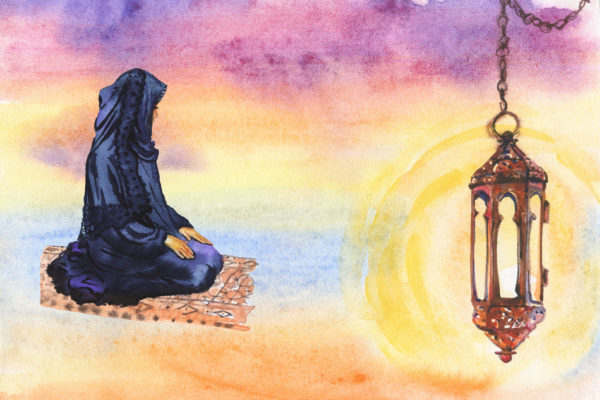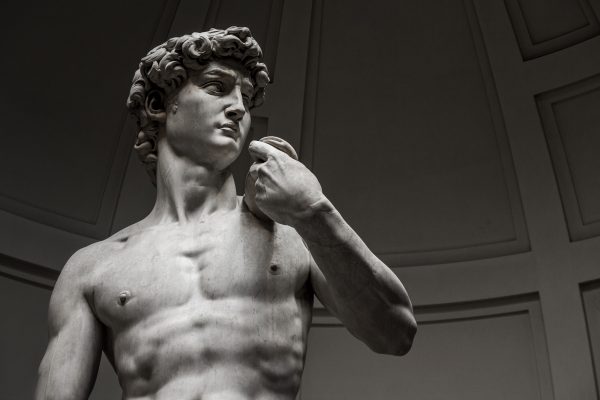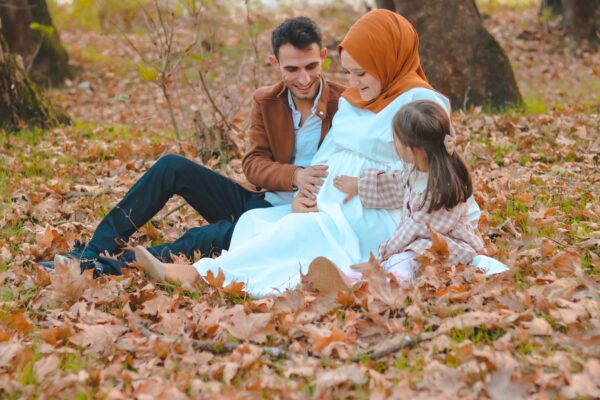What the western media and polity missed to share with their public at home is that Muslim women’s rights and duties are far more in order as described in al-Qur’an. Moreover, Afghan women were allowed to vote long before European women just to name one point that is often missed or ignored.
What the western media and polity missed to share with their public at home is that Muslim women’s rights and duties are far more in order as described in al-Qur’an. Moreover, Afghan women were allowed to vote long before European women just to name one point that is often missed or ignored.
Throughout the world, governments can easily sell and buy two slogans: “Public interest” and “For Your Safety” – that is what European democracies are doing now for public safety against the coronavirus.
In a similar bid, French President Macron Emmanuel introduced a coronavirus safety face mask to the French public as “National pride” because it is 100% made in France.
Hang on a minute! Is not the same France that once banned face veil for only a handful of Muslim women including French reverts? But at that time in the best interest of French society, it was revealed to the public that Muslim women’s burka or veil is a “symbol of oppression”, “health risk”, and a “threat” – and it could even be a “National shame” because it is outdated and misfit for a modern secular society.
Fair enough? I remember an especially poignant day in 2006, when I was a MA journalism student at the University of Leeds. Like many other students and academics, I was shocked to know that the British parliamentarian Jack Straw had provoked anger and outrage among the British Muslim community by saying the veil was a “visible statement of separation and difference”. Not only this, but he was actually one of the former student union presidents at my university as well.
In the aftermath of his comments, many students at the University of Leeds banned him “in protest at what they said were his anti-libertarian policies”.
Since then, the never-ending veil debate has started, and people have written numerous Ph.D. thesis and thousands of newspaper and journal articles, books, manuscripts, and have held public discussions and debates, delivered lectures, and made documentaries, films and produced teasing caricatures.
More worryingly, European newspapers and broadcasters have run disgraceful campaigns to demonise Muslim veil-wearing women 24/7 to an extent that countries including France have banned it.
My own research on the Muslim hijab or veil shows how British conservative and liberal broadsheets and tabloids published a series of articles, editorials, features and comments pieces on the veil that made it a “national debate” bigger than Britain’s illegal wars and climate change.
The press perceives the veil as a clash between Muslims and non-Muslims and presents it as a “terror threat”. Besides, several leading European parliamentarians have made it a regular habit to attack the veil – it has become an easy way of getting media publicity.
Today, the veil is a talk of the town, but still, the majority of people are confused and ill-informed on this subject. Thomas Sealy has raised an important question regarding the Muslim veil in today’s age of COVID-19: “Is there a difference between the niqab and a face mask?”
So what is it that so special in a piece of cloth which makes it a “national pride” when seen as a coronavirus mask in France? Obviously, if it fits into government policy it’s pride, otherwise, the veil can be regarded as a “shame” and “outdated”.
So if the veil is an outdated practice and a terror threat, then why is France driving the entire nation to adopt it? In the words of George Orwell, the veil is a perfect example of “Double Speak”.
In France, it is prohibited for a Muslim woman to cover the face but she will also be fined for not wearing a face mask. Is forcing a Muslim woman not to wear a veil nothing less than mental torture and abuse?
Pity though, how a piece of cloth fosters divisions amidst the coronavirus crisis – mainly because Muslims are easy targets as Richard Adams summed it: “The Hijab-ban attempt is ‘racism dressed up as liberalism’”.
When James McAuley, a Paris correspondent for the Washington Post, posted an article along with the comment, “On the ironies of mask requirements in the country that brought you burka ban” via The Washington Post article “France mandates masks to control the coronavirus. Burqas remain banned”, it almost not-surprisingly brought on a Twitter war.
Within minutes, a thread @Washingtonpost started that turned Twitter into a battleground between supporters and opponents of veil-wearing women. Everyone seems to be a scholar of Islam, a usual practice during Muslim- related discussions and debates. But how many Twitter warriors have read a chapter of the Holy Qur’an An-Nisa to understand what exactly the veil is?
The Veiled-Woman Image in British Press
Western media mostly portrays veil-wearing women as “oppressed” and “backward”. The conservative press supports a ban on the veil, while the liberal press mostly suggests that women should be free to decide.
But is the West really concerned about oppressed women? Because many European countries have treated the veil-wearing Muslim woman as badly as the oppressed ones elsewhere.
This includes banning Muslim women from wearing the burka and bracketing them as “letterboxes” and “bank robbers”. These are thoughts of the British Prime Minister Boris Johnson, so what can you expect from others?
Now compare French and Taliban views of the veil. Are they any different? Both did the same – that is forcing women to adopt their way of wearing clothes in public. The French banned veil wearing, and the Taliban made it mandatory.
Isn’t this simply the politics of the veil? Because if the West truly valued women’s freedom it should not force them to wear or not to wear but rather give women a choice.
But it’s all politics, according to Katharine Viner, who looked at this issue as “feminism as imperialism”, and unknotted false claims of Western leaders, especially George W. Bush, who “bombed Afghanistan to liberate women from burkas” then used the same logic to bomb Iraq because he could not bear the pain of Iraqi women in suffering.
Viner raised a logical point in that women suffer everywhere, often with the suffering used “to justify another war. Where next? China because of its anti-girl one-child policy? India because of widow-burning outrages? Britain because of its criminally low rape conviction rate?”
Janine Rich disclosed the popular western discourse on Islam and Muslims as of the “Oppressed Muslim Women”. For decades, Western powers have successfully used this idea to legalize their attacks on Muslim countries. Too often, sections of the western media push the debates on Muslim women using “oppression” as a point of fascination.
Rich argues that: “The complex discourses surrounding women in the Islamic world have a long and deeply political history, and this narrative has been renewed and re-utilized numerous times to garner widespread public support for Western military intervention in the Middle East”.
What the western media and polity missed to share with their public at home is that Muslim women’s rights and duties are far more in order as described in al-Qur’an. Moreover, Afghan women were allowed to vote long before European women just to name one point that is often missed or ignored.
The truth has always been there, but the real issue is that people don’t want it because sometimes it contradicts with their self-designed way of life.
Perhaps, a best-concluded sentence would be that it is the apolitical weapon of Europe that shows nothing but “double standards”. One rule for a minority and the other rule for the elites.
If European democracy has reached such a low level, then Europe must rethink and revisit its ideas of human rights and personal freedoms.
What is Still Misunderstood in Europe?
Underneath the thread of French nationalism, Macron argued that we Europeans are embracing face masks to save lives. Of course, any sensible person would agree with this argument, but what exactly is so different from what Islam says about the veil? What does it require from a believer? What is the wisdom behind its teachings? What are its impacts and relevance to modern societies?
Going back to the “life-saving” argument, remember that Islam talks about life after death that is everlasting and perpetual, so why would anyone risk an everlasting loss?
Should Muslim women be forced to disregard a modest practice only because a fraction of conservative Europeans don’t like it? Think if someone demands to ban drinking, smoking, and drug use because it kills and costs the NHS £2.7 billion each year. Does the veil cost anything to the NHS?
The irony is that we take what we like and leave what we don’t like. Think about Christianity, Judaism, and other religions that preach modesty – so why is Europe so worried about Muslim women? After all, it is just a piece of cloth, isn’t it?





